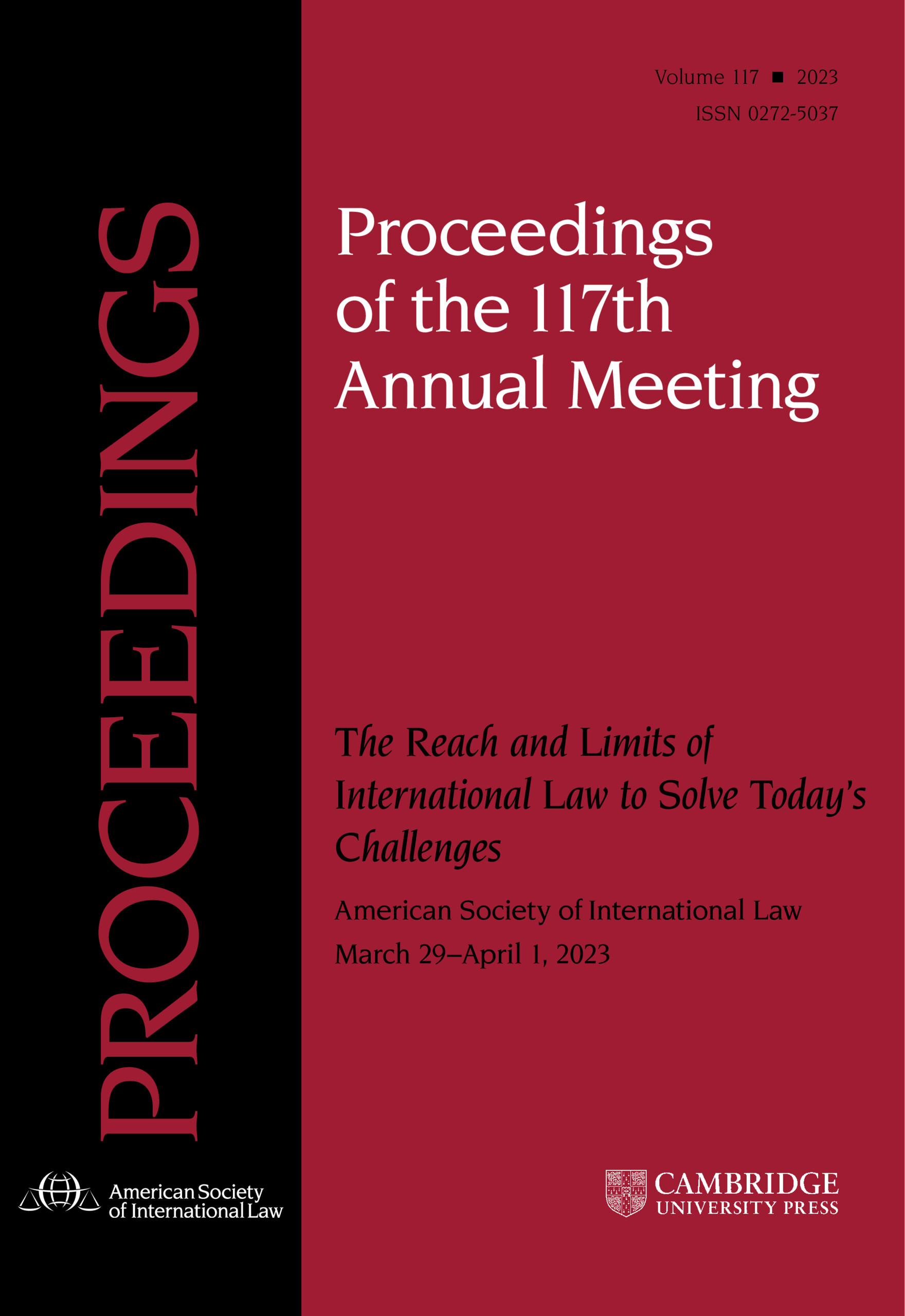Widespread violations of international humanitarian law (IHL) in today's armed conflicts continues to be a critical challenge for the international community. Many actors such as United Nations agencies, the International Committee of the Red Cross, or non-governmental organizations (NGOs) engage with parties to conflict to promote their compliance with IHL. In this intervention, I will focus on the positive role that non-traditional actors, such as non-state armed groups (NSAGs) and their constituencies, may play in this regard. My argument draws mainly from my experience with Geneva Call, a humanitarian NGO that has been engaging NSAGs toward IHL compliance over the past twenty years.Footnote 1
As we all know, NSAGs do not operate in a vacuum. Many of them have some sort of constituency or support base. These include civil society actors such as religious groups, diaspora, and refugee communities. Sometimes, NSAGs are backed by foreign states or other armed groups. Identifying and engaging these actors are important to influence their behavior in the battlefield. Let me give you some examples drawn from Geneva Call's practice that illustrate the diversity of situations and levels of influence:
• In the late 1990s in South Sudan, community-based organizations, women leaders, and church groups were instrumental in persuading the Sudan People's Liberation Army (SPLA) to initiate mine clearance in the “liberated” areas under its control.
• Some armed movements have international solidarity networks. This is the case of the Sahrawi movement, for example. These solidarity groups helped put pressure on the Polisario Front to ban anti-personnel mines in 2005.
• In Senegal, Geneva Call engaged local and refugee communities living in neighboring countries to support our mine action advocacy toward the Casamance rebels.
• We have also engaged with Tamil diaspora but with not much success, as many members were justifying mine use by the Liberation Tigers of Tamil Eelam (LTTE) and dismissing IHL violations as government propaganda.
• In Iraq, Ayatollah Ali al-Sistani issued a “restraint fatwa” in 2015 in response to allegations of abuses by the Popular Mobilization Units (PMU) fighting the Islamic State group in Mossul. His “Advice and Guidance to the fighters on the battlefield” has influenced directly the behavior of the PMU.
Another non-traditional actor that may positively influence other parties to conflict are NSAGs themselves. We have experienced this scenario in various conflict settings where NSAGs engaged by Geneva Call encouraged other groups to undertake similar humanitarian commitments. It was often allied factions that were part of the same coalition, for example brigades of the Free Syrian Army (FSA). In other cases, the armed groups operated in different contexts but shared similar goals or ideology. I remember the example of a leader of the SPLA urging newly created groups in Darfur not to use landmines, explaining how their fight for a homeland ended up with the years in a mined land and thus pleading them not to make the same mistake. In order to foster these peer interactions, Geneva Call regularly invite NSAGs to meet together to address IHL issues. Such inter-NSAG meetings have often resulted in new humanitarian commitments.
Armed groups may also influence the policy of opposing states. A case in point is Sudan where the mine ban commitment made by the SPLA was instrumental in the decision of the government to reciprocate and ratify the Ottawa Convention. In many contexts, NSAGs are backed by foreign states. Such sponsor states often have a significant leverage power and may be mobilized, in some contexts, to press armed groups to respect humanitarian norms. Under Article 1 of the Geneva Conventions, states parties have indeed a responsibility to comply and ensure compliance with the Conventions.
To conclude, our experience shows that peer pressure may be a valuable approach to generate compliance with IHL. The potential of this approach has been underutilized and it would be worthwhile to explore more when and how NSAGs may influence positively other parties to conflict. As a concrete step forward, it could be envisaged to create a network of IHL advocates composed of selected former leaders of NSAGs. Moreover, we also know little about the internal dynamics existing between armed groups and their constituencies. Yet, this support base does play a moderating role in some circumstances. It depends on many factors, but our experience indicates that the primary source of restraint is often internal, rather than external to, the group.


